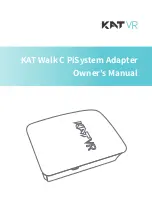
16
CcM WiFi Manual 2021
If the user has assigned a password to
lock the configuration (see section 6.1.1),
it will be necessary to enter it in order
to change the settings in “Network
Setting” (Figure 16). Once logged in, the
session may be closed on the “Restore”
page (Figure 19).
This page only appears available in
Cloud mode (section 6.1.1.1) and FTP
mode (6.1.1.3), because in Gateway
mode (section 6.1.1.2) the device only
acts as a gateway.
Figura 16 CcM Web Server – Login
6.2.2 Data
This screen primarily serves for basic data visualisa-
tion.
By selecting “Data” in the upper menu, the screen
will appear as per Figure 17.
Figure 17 CcM Web Server – Data
In the “CCM4” table, you can see the following pa
-
rameters related to the metering realized by the
principal CcM device in the phases L1, L2 and L3. In
each case:
•
“Act. Power”: Active RMS Energy.
•
“Voltage”: RMS Voltage.
•
“Current”: RMS Current.
•
“PF”: Power Factor.
In table “CCM1” you may view the following para
-
meters of up to four CcM1-C secondary devices con-
nected to the secondary bus of the principal CcM
device. The order of the devices in the table is given
by the address they have in the bus (in ascending
order):
•
“Is 0” RMS Current of CcM1-C
For data visualisation, graphs, reports
and storage of historical data, it is
recommended to use the
clicMONITOR
Android app to configure and register
the device in the
clicMONITOR
server
and to use the free EnergyCcM tool
(
clicmonitor.com
), configuring the
CcM WiFi in Cloud mode. To do this,
it is necessary to create a user on
the
clicMONITOR
platform, and to
associate the principal device through
its serial number.









































